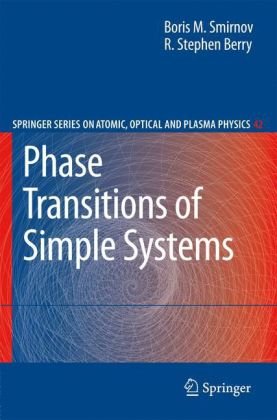

Most ebook files are in PDF format, so you can easily read them using various software such as Foxit Reader or directly on the Google Chrome browser.
Some ebook files are released by publishers in other formats such as .awz, .mobi, .epub, .fb2, etc. You may need to install specific software to read these formats on mobile/PC, such as Calibre.
Please read the tutorial at this link: https://ebookbell.com/faq
We offer FREE conversion to the popular formats you request; however, this may take some time. Therefore, right after payment, please email us, and we will try to provide the service as quickly as possible.
For some exceptional file formats or broken links (if any), please refrain from opening any disputes. Instead, email us first, and we will try to assist within a maximum of 6 hours.
EbookBell Team

4.7
66 reviews
ISBN 10: 3540715142
ISBN 13: 9783540715146
Author: Boris M. Smirnov; Stephen R. Berry
Thermodynamic concepts of aggregate states and their phase transitions - veloped during the 19th Century and are now the basis of our contem- rary understanding of these phenomena. Thermodynamics gives an universal, macroscopic description of the equilibrium properties of phase transitions - dependent of the detailed nature of the substances. However understanding the nature of phase transitions at the microscopic level requires a di?erent approach, one that takes into account the speci?cs of the interparticle int- actions. In this book, we lay the groundwork that connects the microscopic phenomena underlying phase changes with the macroscopic picture, but in a somewhat restricted way. We deal only with systems in which electronic excitations are not important, only with atomic systems, and only with - mogeneous systems. We also restrict our analysis to systems in which only pairwise interactions need be included, and, in many parts of the treatment, to systems in which one need consider only the interactions between nearest neighbor atoms. In establishing these restrictions, we can be guided by the solid and liquid states of inert gases and the phase transitions between them, althoughthesubsequentanalysisisrelevantandapplicableforaseriesofother physical systems. To study the behavior of a system of many interacting identical par- cles, we work extensively with its potential energy surface (PES), a surface in a many-dimensional space whose independent variables are the monomer coordinates or some transformation thereof. A central property of any m- tidimensional PES is its large number of local minima.
Introduction
Thermodynamics of Ensembles of Classical Particles
Excitations in Simple Atomic Ensembles
Structures of Ensembles of Interacting Particles
Thermodynamics of Dense Gases and Liquids
Clusters with Short-Range Interaction
Ensembles of Classical Particles with Repulsion
Configurational Excitations and Aggregate States of Ensembles of Classical Particles
Configurational Excitation and Voids in Ensembles of Bound Classical Atoms
Configurational Cluster Excitation with Pairwise Interactions
Phase Transitions in Macroscopic Systems of Atoms
Melting of Clusters and Bulk Atomic Ensembles
Dynamics of Configurational Excitations in Ensembles of Classical Particles
Coexistence of Cluster Phases
Glassy States of an Ensemble of Bound Atoms
Transport of Voids in Nucleation Processes
Conclusion and Summary
phase transitions pdf
phase transitions statistical mechanics
phase transition examples
phase transition order
Tags: Boris Smirnov, Stephen Berry, Transitions, Systems